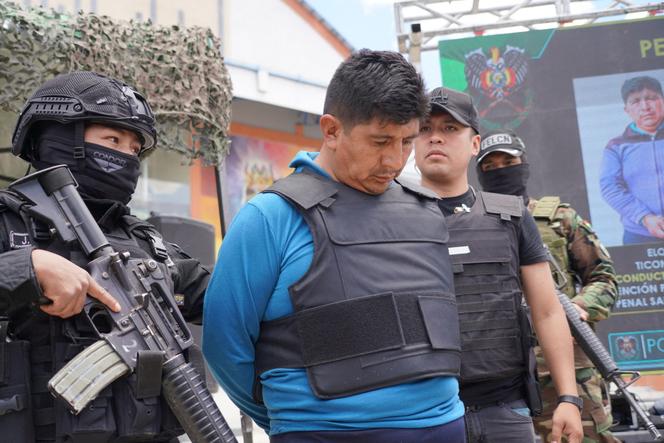


On January 5, 8.7 tons of cocaine were seized in the department of Oruro, in the Altiplano region of western Bolivia, in what was described by the authorities as "the largest anti-drug operation in Bolivian history." Camouflaged in wooden slabs, the drugs were destined for the European market. The value of the haul exceeded $520 million (€478 million).
Six months earlier, in May 2023, Bolivia's interior minister, Eduardo del Castillo, then 34 years old, dressed in camouflage fatigues and a bullet-proof vest, described another crackdown in the Cochabamba region, in the center of the country, as "historic". Twenty-seven cocaine paste factories and seven refining laboratories had just been dismantled there by the special anti-narcotics force (Fuerza Especial de Lucha Contra el Narcotrafico; FELCN).
These operations publicized by the government of Luis Arce (left), in power since November 2020, aim to convince public opinion of its effectiveness against drug trafficking. In total, in 2023, almost 33 tons of cocaine were seized (compared with 20.3 in 2022) and more than 1,800 factories have been destroyed since 2020. However, these figures reveal an alarming reality for Bolivia: Drugs in circulation are exploding. "We're awash with cocaine," said Gabriela Reyes, a drug-trafficking expert and former director of the Bolivian Observatory for Citizen Security and the Fight against Drugs. Specialists estimate that seizures concern only 10% of the drugs in circulation.
For a long time, Bolivia was only a producer of coca leaves, consumed for medicinal or traditional reasons, ranking third behind Colombia and Peru. In recent years, however, the country has become one of the world's leading cocaine manufacturers.
In La Paz, in the heart of the largest indoor coca leaf market, producers from the Yungas, a traditional production region to the northeast of the city, dismiss any confusion. "Grapes aren't wine; you need a chemical process to transform them. It's the same with coca," said one of them, Oscar Mercado, who dries his leaves on the ground. "All our production is for personal consumption," said the small producers.
In Bolivia, while coca leaf cultivation is authorized on 22,000 hectares, the actual area under cultivation is much larger. According to the United Nations Office on Drugs and Crime, some 30,000 hectares are in use in the country while other analysts put the figure at 45,000 hectares.
Yungas growers are keen to distinguish themselves from another, more recent, producing region, Chapare (center), a stronghold of former President Evo Morales (2006-2019), himself a former grower and head of the powerful regional cocalero union. In 2017, Morales extended the legal area for coca cultivation, which has mainly benefited Chapare. "Everyone knows that the leaf from the Yungas, juicy and sweet, is for personal consumption," said Jose Luis Joaquim at La Paz market. "And everyone also knows that most Chapare coca goes to the drug trade: Its leaf is big, hard and irritates the tongue."
You have 65% of this article left to read. The rest is for subscribers only.
